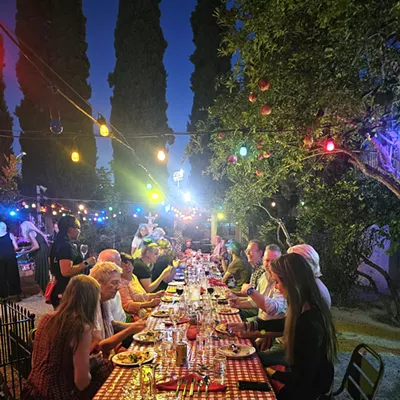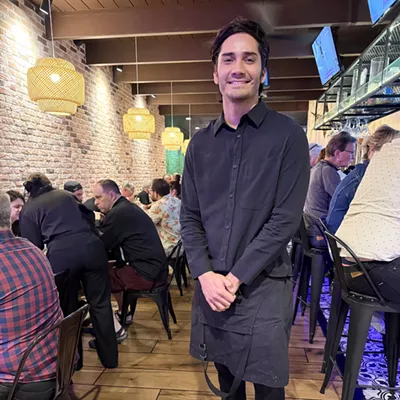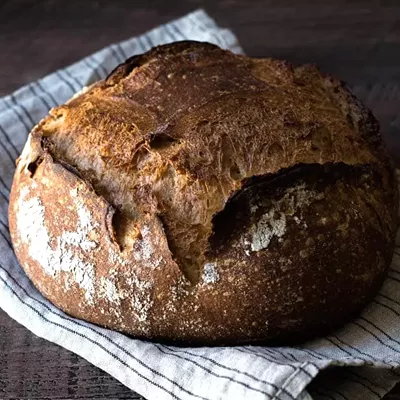Recently, Tucson was named a UNESCO World City of Gastronomy. According to Devon Sanner, executive chef of Janos Wilder's Carriage House, "part of being named a 'City of Gastronomy' means that you are making the most of the foods that grow naturally in your region (with very little waste), and utilizing community food sources that aid in distribution to the community, such as the Community Food Bank and local farmers' markets."
For the MacPherson family, food is the line in the sand between buying their children socks or underwear at the beginning of the school year, because once groceries are purchased, they cannot afford both. The MacPhersons used SNAP (formerly known as 'food stamps') for six months as a means of survival. Their experience is only one of thousands of similar experiences others have living in Tucson.
Anne MacPherson is a married mom of three with a college degree. In 2015 she found herself in the daunting and often humiliating position of having to apply for food stamps so she could feed her family.
"My husband was working part time, and at the time I was pregnant and unemployed," she says.
We talked at length about the process of applying for food assistance programs, the mental and emotional toll it takes on the family, and the amounts received. According to foodstampoffice.us, the maximum net income allowed for a family of five (in Arizona) is $2,298. At this amount, the maximum food stamp allotment for a family of five is $750 per month. MacPherson's husband was bringing home approximately $1,100 a month (after taxes). However, they were only receiving $132 a month to feed their family of five.
Let's do the math: $132 divided by 5 people is $26.40 per person, for the month. When you break that down to the daily allocation per person, that comes out to 88 cents per person per day.
When asked how that worked for her family, the answer was simple: "It didn't," she told me.
She went on to explain the unreal balancing act they had to do every month to eat, often having to overdraw their bank account at the end of the month in order to make it to their next food stamp disbursement. "Basically, we would go food shopping on paydays and save the SNAP card for the in between weeks. Then we would either buy half of what we needed, or spend it all, knowing that at the last week of the month we would have to go negative in our checking account to get food for the family."
Struggling to understand how this all works out at the end of the month, when she had no money and no food, I asked her what her shopping cart might look like. "Well, I would buy more than what I needed at the moment so that it would last longer. For example, I may not need five pounds of ground beef, but I'm going to buy five pounds of ground beef because I have no other choice come the end of that week when I'm running out of food. So, I buy the 10-pound bag of potatoes, and the 10 for $10 cans of corn, and the ground beef and I make shepherd's pie."
It seems that our local Department of Economic Security office (DES - responsible for administering and distributing aide) has missed the mark in understanding how crucial food (and its various sources) is to families that live here..
MacPherson was not aware that our local farmers markets offer something called "Double Your SNAP Dollars," (a program that allows you to swipe your SNAP card for $20 at a participating Farmer's Market, and get $40 in "SNAP Bucks" to use on fresh, locally harvested produce). She was not aware that the farmers' markets even accepted SNAP. Nor did she realize that Costco, Trader Joe's, and Food Conspiracy Co-Op also accept SNAP.
This information was never made available to her by the agency put in place to help her. If it seems like this is problematic, that's because it is. When our local food curators know and understand how crucial the availability of food is to the families who live here, and the person writing this article is aware of programs that can help families make it through the "food desert" times, why is it that the families themselves are not being informed? Have we moved from a "lend a hand to my fellow man" mentality to a "figure it out and good luck to ya" mentality? Only time will tell, but hopefully time won't run out for families that need that hand the most.
Editor's note: This is Part One of a three-part series on food availability/accessibility for Tucson's working poor. In Part Two, Nelson explores the various programs in place (outside of SNAP) that help feed families. Amy MacPherson asked that we not use her real last name to protect her family's privacy.








